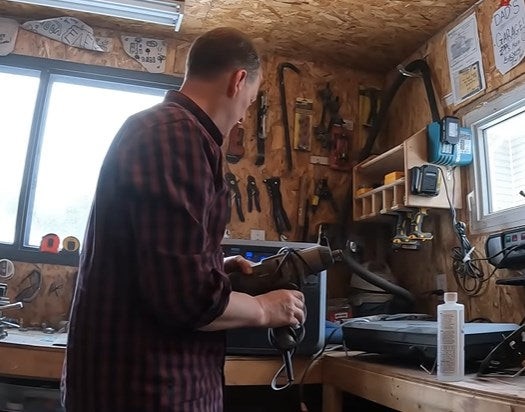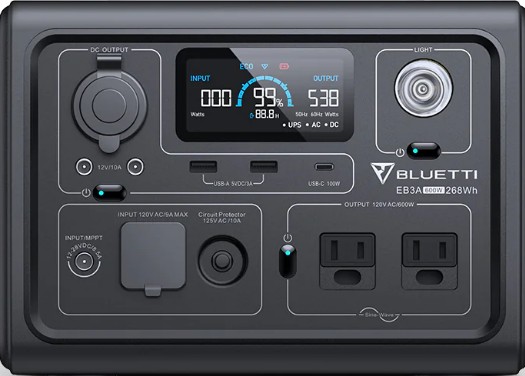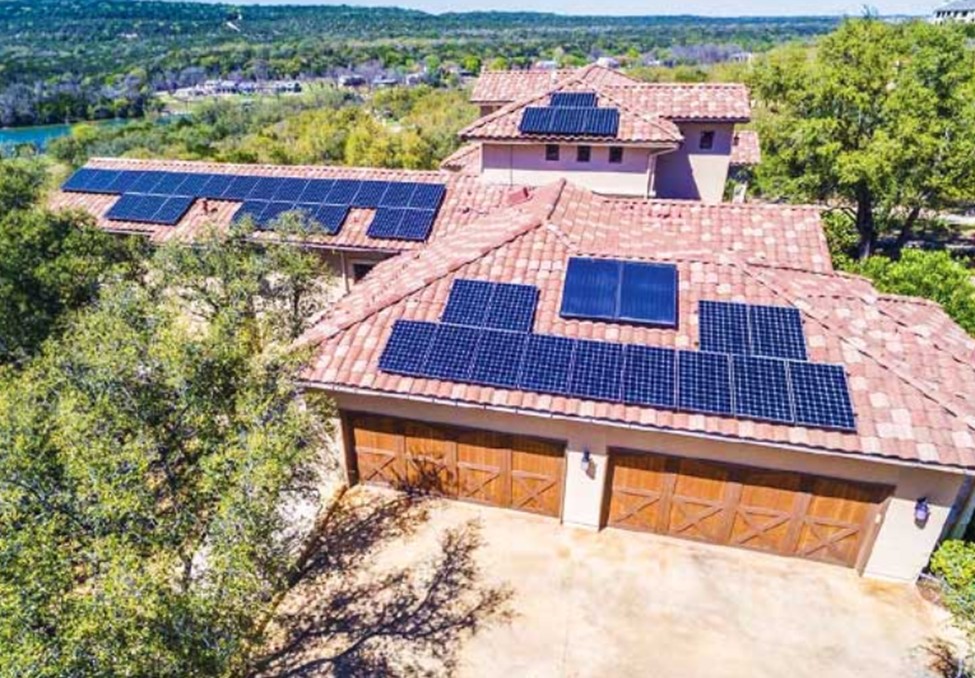How Much Electricity Does A Fan Use is a common question, especially with rising energy costs. Understanding fan power consumption is crucial for managing your energy usage and minimizing expenses. At HOW.EDU.VN, we provide expert insights to help you make informed decisions about appliance efficiency and energy-saving strategies, including how to optimize the use of your home cooling fan and lower your energy bill. Explore factors affecting fan energy consumption and ways to reduce your electricity bill.
1. What Is the Average Electricity Usage of a Fan?
The average electricity usage of a fan can vary significantly, depending on the type of fan, its size, and the speed at which it operates. Determining fan power consumption is essential for calculating energy costs. Here’s a breakdown:
- Small Personal Fans: These typically consume the least amount of power, ranging from 5 to 20 watts.
- Pedestal Fans: These mid-sized fans usually use between 50 and 100 watts.
- Ceiling Fans: Being larger, these can range from 75 to 200 watts, depending on their size and features.
The actual fan energy consumption will also depend on how often you use the fan and at what speed setting. Lower speeds consume less power, while higher speeds increase consumption.
2. How Many Watts Do Different Types of Fans Use Annually?
To determine how many watts different fans use in a year, consider the wattage of the fan and the number of hours it operates. Calculating annual kilowatt hours (kWh) helps estimate yearly energy costs. To help you get a good estimate of yearly electricity usage for different types of fans, here’s a breakdown of annual electricity consumption based on an average use of 8 hours per day:
| Fan Type | Average Wattage | Daily Use (Hours) | Annual kWh |
|---|---|---|---|
| Personal Fan | 10 watts | 8 | 29.2 |
| Pedestal Fan | 75 watts | 8 | 219 |
| Ceiling Fan | 125 watts | 8 | 365 |



These figures can help you understand the potential long-term electricity costs associated with each type of fan. The annual kWh values can be used to calculate the actual cost based on your local electricity rates. Understanding typical wattage helps in energy efficient appliance usage.
3. What Is the Cost to Run a Fan Based on Electricity Consumption?
The cost to run a fan depends on its power consumption and your local electricity rates. Calculating the operating costs helps in budgeting and making informed choices about fan usage. Here’s how you can estimate the cost:
- Determine the Fan’s Wattage: Find the wattage listed on the fan.
- Convert Watts to Kilowatts: Divide the wattage by 1000 to get kilowatts (kW).
- Calculate Daily Energy Use: Multiply the kW by the number of hours the fan runs each day.
- Calculate Monthly Energy Use: Multiply the daily energy use by the number of days in the month.
- Determine the Cost: Multiply the monthly energy use by your electricity rate (cost per kWh).
For example, if you have a 50-watt fan, and your electricity costs $0.15 per kWh:
- Daily Cost: (50/1000) kW * 8 hours * $0.15/kWh = $0.06
- Monthly Cost: $0.06 * 30 days = $1.80
Thus, the estimated monthly cost to run the fan is $1.80. Calculating fan operating costs aids in energy management.
4. Do Fans Use a Lot of Electricity Compared to Other Appliances?
When compared to other household appliances, fans generally consume less electricity. Understanding comparative appliance energy usage helps manage overall energy consumption. Here’s a quick comparison:
- Fans: As discussed, typically use between 5 and 200 watts.
- Air Conditioners: Window units can use 500 to 1500 watts, and central AC systems can use 3000 to 5000 watts.
- Refrigerators: Use around 100 to 400 watts, but run continuously.
- Lighting: LED bulbs use very little power (5-15 watts), while incandescent bulbs use much more (40-100 watts).
Fans provide a cost-effective cooling solution, especially when used in conjunction with air conditioning to circulate cool air more efficiently. Fans support energy conservation and reduce bills.
5. How Much Electricity Do Fans Use Over Various Durations?
The amount of electricity a fan uses varies based on how long it is running and its power consumption rate. Analyzing electricity usage over different periods helps in understanding energy costs. Here’s an overview:
- Hourly: A typical fan may use between 0.025 kWh (small fan) and 0.2 kWh (large fan).
- Daily: If running for 8 hours, the usage ranges from 0.2 kWh to 1.6 kWh.
- Monthly: Running for 8 hours daily, the monthly usage ranges from 6 kWh to 48 kWh.
These figures help illustrate how consistent fan usage can accumulate significant energy consumption over time. Estimating electricity usage over time is key to cost management.
6. What Are Effective Ways to Reduce the Cost of Running a Fan?
To reduce the cost of running your fan, consider several energy-efficient strategies. Implementing these measures can lead to significant savings. Here are some tips:
- Use Fans Strategically: Only use fans in occupied rooms. Close doors and windows to keep the cool air contained.
- Adjust Fan Speed: Use the lowest comfortable speed setting.
- Choose Energy-Efficient Models: Look for fans with the Energy Star certification.
- Combine with Air Conditioning: Use fans to circulate cool air, allowing you to set your AC at a higher temperature.
- Regular Maintenance: Clean fan blades regularly to ensure efficient operation.
By implementing these strategies, you can minimize your energy consumption and reduce your electricity bill. Energy saving tips enhance cooling system efficiency.
7. What Factors Influence a Fan’s Electricity Consumption?
Several factors can influence a fan’s electricity consumption. Understanding these elements helps in making informed choices and managing energy use. Here are some key factors:
- Fan Size: Larger fans typically consume more power due to their larger motors and blades.
- Fan Type: Different types of fans (e.g., personal, pedestal, ceiling) have varying power requirements.
- Speed Setting: Higher speeds require more power.
- Motor Efficiency: More efficient motors consume less electricity for the same level of performance.
- Blade Design: The design of the blades can affect how efficiently the fan moves air, influencing power consumption.
Considering these factors helps optimize fan performance and reduce energy waste.
8. How Can Smart Technology Help in Managing Fan Electricity Usage?
Smart technology offers innovative ways to manage and reduce fan electricity usage. Integrating smart features can lead to greater energy savings and convenience. Here are some ways smart technology can help:
- Smart Fans: These fans come with built-in Wi-Fi connectivity and can be controlled via smartphone apps.
- Timers and Schedules: Smart fans can be programmed to turn on and off at specific times, ensuring they only run when needed.
- Motion Sensors: Some smart fans have motion sensors that detect when a room is occupied and adjust the fan speed accordingly.
- Voice Control: Compatible with voice assistants like Amazon Alexa or Google Assistant, allowing for hands-free operation.
- Energy Monitoring: Smart fans often provide real-time data on energy consumption, helping you track and optimize usage.
Smart technology enhances convenience and ensures optimal energy use.
9. Are There Power-Saving Features Available on Modern Fans?
Yes, many modern fans come with power-saving features designed to reduce electricity consumption. These features can help you save money and reduce your environmental impact. Common power-saving features include:
- Energy-Efficient Motors: Modern fans often use DC motors, which are more efficient than traditional AC motors.
- Variable Speed Settings: Allows you to adjust the fan speed to match your cooling needs, using less power at lower speeds.
- Timers: Automatically turns off the fan after a set period, preventing unnecessary energy usage.
- Remote Controls: Allows you to easily adjust the fan settings without getting up, ensuring efficient use.
- Eco Mode: Automatically adjusts the fan speed based on the room temperature, optimizing energy consumption.
These power-saving features make modern fans a more energy-efficient cooling option.
10. How Does Fan Maintenance Affect Electricity Usage?
Proper fan maintenance can significantly impact its electricity usage. Regular maintenance ensures that your fan operates efficiently and consumes less power. Here are some maintenance tips:
- Clean Fan Blades: Dust and debris on the blades can reduce airflow, causing the motor to work harder and consume more energy.
- Lubricate Motor: Regularly lubricating the motor can reduce friction and improve efficiency.
- Check for Loose Connections: Ensure all electrical connections are secure to prevent energy loss.
- Replace Worn Parts: Replace any worn or damaged parts, such as belts or bearings, to maintain optimal performance.
Regular maintenance ensures efficient operation and extends fan life.
11. What Are the Most Energy-Efficient Types of Fans?
The most energy-efficient fans typically use advanced motor technology and are designed to maximize airflow with minimal power consumption. Selecting an energy-efficient model can lead to substantial savings. Here are some of the most energy-efficient types of fans:
- EC (Electronically Commutated) Fans: These fans use brushless DC motors that are highly efficient and offer variable speed control.
- DC (Direct Current) Fans: DC fans are known for their energy efficiency and quiet operation.
- Energy Star Certified Fans: Fans with the Energy Star label meet strict energy efficiency guidelines set by the EPA.
- Ceiling Fans with LED Lights: Combining a fan with LED lighting reduces overall energy consumption.
Choosing these energy-efficient options can significantly lower your electricity bill.
12. Can Using a Fan with Air Conditioning Save Electricity?
Yes, using a fan in conjunction with air conditioning can save electricity. The fan helps to circulate the cool air produced by the AC, allowing you to set the thermostat higher. This reduces the workload on the air conditioner and lowers its energy consumption. Here’s how it works:
- Improved Air Circulation: Fans help distribute cool air evenly throughout the room, eliminating hot spots.
- Higher Thermostat Setting: By circulating the air, you can set your AC thermostat a few degrees higher without sacrificing comfort.
- Reduced AC Runtime: The air conditioner won’t have to work as hard or run as long to maintain the desired temperature.
Using fans to supplement AC can lead to significant energy savings.
13. How Does the Location of a Fan Affect Its Electricity Consumption?
The location of a fan can indirectly affect its electricity consumption. Proper placement can improve its efficiency, while poor placement can lead to increased energy use. Consider these points:
- Room Size: Use appropriately sized fans for the room to avoid overworking the motor.
- Airflow Obstructions: Ensure there are no obstructions blocking the airflow, as this can reduce efficiency.
- Proximity to Occupants: Place fans where they can directly provide a cooling breeze to occupants, maximizing comfort and reducing the need for higher speeds.
- Ceiling Fan Direction: Adjust the direction of ceiling fans seasonally. In summer, the blades should rotate counterclockwise to create a downdraft; in winter, they should rotate clockwise to pull warm air down from the ceiling.
Optimizing fan placement can enhance its effectiveness and reduce energy waste.
14. What Role Does Insulation Play in Reducing Fan Usage?
Proper insulation plays a crucial role in reducing fan usage by helping to maintain a consistent indoor temperature. Effective insulation minimizes heat transfer, keeping your home cooler in the summer and warmer in the winter. This reduces the need for constant fan operation. Here’s how insulation helps:
- Reduces Heat Gain: Insulation prevents external heat from entering your home during hot weather, reducing the demand for cooling.
- Maintains Consistent Temperature: By minimizing temperature fluctuations, insulation reduces the need to constantly adjust fan settings.
- Lowers Energy Bills: With better insulation, you can rely less on fans and air conditioning, resulting in lower energy bills.
Insulation is a fundamental component of energy-efficient home design.
15. How Can I Choose an Energy-Efficient Fan?
Choosing an energy-efficient fan involves considering several key factors. These considerations will help you select a fan that provides adequate cooling while minimizing energy consumption:
- Look for the Energy Star Label: Fans with the Energy Star certification meet strict energy efficiency guidelines set by the EPA.
- Check the Fan’s Energy Efficiency Rating: This rating indicates how efficiently the fan uses electricity.
- Consider the Fan’s Motor Type: DC motors are generally more energy-efficient than AC motors.
- Choose the Right Size Fan: Select a fan that is appropriately sized for the room you intend to use it in.
- Look for Power-Saving Features: Such as variable speed settings, timers, and remote controls.
Selecting the right fan is essential for minimizing your energy footprint.
16. What Is the Difference Between AC and DC Fans in Terms of Electricity Usage?
AC (Alternating Current) and DC (Direct Current) fans differ significantly in terms of electricity usage. Understanding these differences can help you make a more informed choice. Here’s a comparison:
- AC Fans:
- Use traditional AC motors.
- Generally less energy-efficient.
- Typically less expensive to purchase.
- Offer fewer speed control options.
- DC Fans:
- Use DC motors, which are more efficient.
- Consume less electricity, resulting in lower energy bills.
- Offer more precise speed control.
- Operate more quietly.
DC fans are generally the better choice for those looking to minimize energy consumption.
17. How Can I Calculate the Total Energy Consumption of My Fan?
To calculate the total energy consumption of your fan, you need to know the fan’s wattage, the number of hours it runs per day, and the number of days you use it per month. The formula is as follows:
(Wattage / 1000) * Hours Used Per Day * Days Used Per Month = Monthly kWh Consumption
For example, if your fan is 50 watts and you use it for 8 hours a day for 30 days:
(50 / 1000) * 8 * 30 = 12 kWh
Therefore, your fan consumes 12 kWh per month. Knowing how to calculate energy use helps track usage patterns.
18. Are There Any Government Incentives for Purchasing Energy-Efficient Fans?
Government incentives for purchasing energy-efficient fans can vary depending on your location and current energy policies. Checking for local rebates and incentives can help offset the initial cost of purchasing an energy-efficient model. To find out about available incentives:
- Check with Your Local Utility Company: Many utility companies offer rebates for purchasing Energy Star certified appliances.
- Visit the Energy Star Website: The Energy Star website provides information on federal and state incentives for energy-efficient products.
- Consult Your State Energy Office: Your state energy office can provide information on state-specific incentives and programs.
Taking advantage of these incentives can make energy-efficient fans more affordable.
19. How Does the Number of Blades on a Fan Affect Its Electricity Consumption?
The number of blades on a fan can affect its electricity consumption, although the impact is often minimal compared to other factors such as motor type and speed setting. Generally:
- More Blades: Can move air more quietly and efficiently at lower speeds, potentially reducing energy consumption in some cases.
- Fewer Blades: Can move more air at higher speeds, but may require more power to do so.
The design and pitch of the blades are more significant factors in determining overall efficiency.
20. What Are Some Common Misconceptions About Fan Electricity Usage?
There are several common misconceptions about fan electricity usage that can lead to inefficient energy management. Correcting these misconceptions can help you make more informed decisions. Some common myths include:
- Myth: Fans Cool Rooms. Fact: Fans cool people by creating a breeze that evaporates sweat. They don’t actually lower the room temperature.
- Myth: All Fans Use the Same Amount of Electricity. Fact: Electricity usage varies widely depending on the fan type, size, and speed setting.
- Myth: Leaving a Fan Running in an Empty Room Saves Energy. Fact: Since fans cool people, not rooms, there’s no benefit to running them in empty rooms.
- Myth: Newer Fans Are Always More Efficient. Fact: While many newer fans are more efficient, it’s essential to check the energy efficiency ratings before purchasing.
Avoiding these misconceptions can help you optimize your fan usage and reduce energy waste.
Do you have more questions about energy efficiency or want personalized advice from experts? Contact our team of over 100 Ph.D.s at HOW.EDU.VN. We offer tailored consultations to help you optimize your energy usage and save money. Reach out today for expert guidance.
For personalized advice and solutions, contact HOW.EDU.VN at:
- Address: 456 Expertise Plaza, Consult City, CA 90210, United States
- WhatsApp: +1 (310) 555-1212
- Website: how.edu.vn
Let us help you achieve your energy-saving goals.